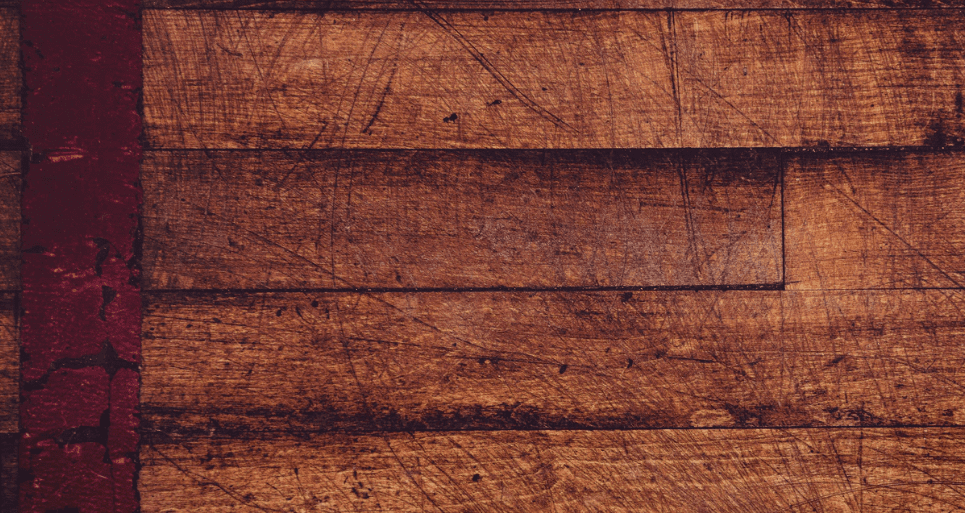You happened upon quite the deal on a used home, but it needs a little tender loving care. The floor needs replacing, but you think you can handle the task yourself. And you’re right. You can. Knowing how to refloor a mobile home on your own is a great way to save some money.

Sure you could hire a contractor to tackle the task, but you could also funnel those funds elsewhere by doing it yourself.
How to refloor a mobile home and save yourself some money
Many of the older homes have particle board for sub-flooring. While it’s an affordable sub-flooring option, it comes at a cost. Particle board is not the most durable of construction materials due to its sensitivity to moisture. The tiniest amount of water can cause some serious rotting and warping to your sub-floor.
In newer homes, plywood or OSB is the standard for sub-flooring, but that too can fall prey to water damage although it’s harder than particle board.
Remove the old flooring
Out with the old so we can say hello to the new. To begin, you’ll need to remove the trim. After the trim is carefully removed, pull up the top flooring material. Follow these instructions from SFGate.com for a well-written tutorial on baseboard and trim removal.
With the trim and baseboard out of the way, it’s time to remove the carpet or laminate you have covering the sub-floor.
Once that’s done, it’s time to get that particle board subflooring removed. With a circular saw set to the depth of your subfloor, cut along the edge, as close to the wall as possible. You can cut the subfloor into smaller panels for easy removal. Make sure you’re not going to cut any wires or pipes in the process. The best thing you can do is set the blade to cut as deep as the sub-floor is and no more. For example, if the subfloor is ¾” thick, set your blade to that.

A knife can be utilized to pull out the leftover sub-floor that’s wedged under the wall.
Fix any damaged floor joists
The easiest approach to repairing any damaged floor joists will be adding reinforcements. Adding 2x4s to the damaged joist is a simple fix, depending on the extent of the damage. If the damage is significant, then completely replacing the floor joist is a must.
Keep energy costs down, add insulation
If you’re into saving energy costs, you definitely want to capitalize on the opportunity to add insulation. This is prime time for that as you have the floor joists exposed. In between each joist, you can add your insulation. This will make for a lower energy bill. A lower energy bill makes for a happier homeowner!
Installing the new sub-flooring
To get started, buy enough plywood or OSB at your local home improvement store. Now you can cut the sheets of sub-flooring to fit the floor space of your home. Don’t forget to take the sliver of space underneath your wall into account.
So you have a way to nail and glue the boards to the perimeter of the mobile home, you’ll need to nail some 2x4s along the perimeter. This will create a ledge that equals the height of the floor joists, so you have a way to attach the sub-floor to your home’s perimeter. Plan out where your subfloor seams will be and then add more 2x4s in between floor joists, where necessary to attach the floor.
Position the sub-floor accordingly – glue and nail it in place.
Install the new floor material
Now here’s the fun part. It’s time to go shopping for that new flooring type you want in your home. Do you want carpet? Laminate? Hardwood? Bamboo? The options are endless. And it’s all contingent on your particular tastes and lifestyle. Whatever you choose, consider quality and aesthetics for increasing your home’s appeal to you or a potential buyer down the road.

Once you’ve selected and ordered your flooring, it’s time to get it installed.
After you’ve installed the new floor, don’t forget to put the trim and baseboard back for a final touch. And now you’re all set.
Newer and better at an affordable cost
See? Reflooring a mobile home isn’t all that difficult if you’re looking for big savings. With the right tools, knowledge, and some determination, you’re all set for a successful do-it-yourself approach.
Now that you know how to refloor a mobile home, check out our article on how to remodel an old mobile home.


